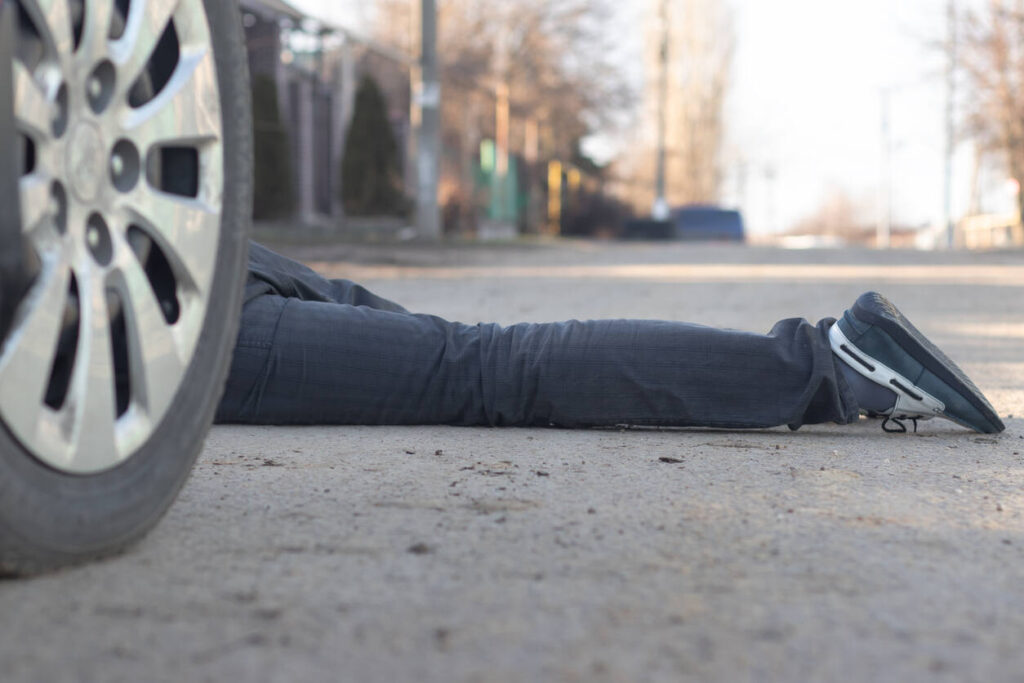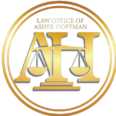Why Long Beach Premises Liability Cases Require Focused Legal Representation
A slip and fall or other premises liability incident can change your life in seconds. One moment you are running errands or visiting a friend, and the next you are facing emergency treatment, missed work, and weeks or months of recovery.
These events are not “just accidents.” They often stem from preventable hazards, such as wet floors without warning signs, broken steps, inadequate lighting, uneven sidewalks, or security failures. When property owners and managers fail to maintain their spaces or warn visitors about potential dangers, California law allows injured individuals to pursue accountability.

Working with a slip and fall lawyer in Long Beach is crucial because these claims hinge on specific details. To succeed, you need to show that there was a dangerous condition, that the owner knew or should have known about it, that it caused your injuries, and that your losses are real and documented. Insurers routinely argue that hazards were obvious, trivial, or your fault. Our knowledgeable premises liability attorneys can quickly investigate, preserve crucial evidence, and build a case that accurately reflects the actual impact on your life.
At the Law Offices of Asher Hoffman, clients work directly with an attorney from day one, beginning with a free consultation. They receive clear updates and get trial-tested advocacy aimed at achieving meaningful results.
What Counts as Premises Liability in California
Premises liability is the body of California law that holds owners and occupiers responsible for dangerous conditions on their property. Liability is not automatic simply because you were hurt. The question is whether the person or business accountable for the property acted reasonably to keep it safe or to warn about known risks.
That standard applies to grocery stores, apartment complexes, big-box retailers, restaurants, hotels, offices, parking lots, sidewalks, and public buildings. It also applies, with special rules and deadlines, to public entities, such as cities, counties, and transit agencies.
Common premises liability scenarios include:
- Slip and fall incidents from spills, leaks, tracked-in rain, or freshly mopped floors without warnings.
- Trip and fall incidents from uneven flooring, broken tiles, curled mats, cords, or raised sidewalk slabs.
- Stairway and handrail defects, including loose treads, missing rails, and poor lighting.
- Unsafe aisles or merchandise displays that create protrusions or falling-object hazards.
- Parking lot defects, potholes, and inadequate lighting that obscure hazards.
- Elevator and escalator malfunctions or poor maintenance.
- Negligent security, including broken locks, inadequate lighting, and failure to address known criminal activity.
- Swimming pool hazards, including missing depth markers, slippery surfaces, or unlatched gates.
Each category requires a tailored investigation to prove how the condition formed, how long it existed, what inspections should have caught it, and how it caused your injuries.
Common Causes of Slips, Trips, and Falls in California
Property hazards develop for predictable reasons. Understanding these causes helps establish who is responsible and why the incident was preventable. We look for patterns in the way a store, property manager, or public agency handles maintenance, inspections, and repairs.
Frequent causes include:
- Liquid spills and food debris in stores are not promptly detected and cleaned.
- Leaks from refrigeration units, roofs, or plumbing that create recurrent wet spots.
- Inadequate matting and water control near entrances during rain.
- Worn or noncompliant floor finishes that become dangerously slippery.
- Broken concrete, height differentials in sidewalks, and uneven transitions.
- Poor lighting that hides hazards or creates glare.
- Cluttered aisles, protruding displays, and misplaced merchandise.
- Failure to follow written sweep logs, inspection schedules, or maintenance protocols.
When these conditions exist, a diligent property operator should either rectify the hazard or provide clear and timely warnings to ensure the safety of all individuals. When they do not, injuries are foreseeable.
Injuries We See After Slip and Fall Incidents
Falls can cause serious harm at any age, and recovery may be lengthy. Beyond the initial pain, many clients face surgeries, therapy, lost income, and permanent limitations that change daily life. Our team documents the entire medical picture, ensuring your claim accounts for both current and future needs.
Common injuries include:
- Fractures to the wrist, hip, ankle, knee, ribs, and face.
- Traumatic brain injuries and concussions.
- Spinal injuries, herniated discs, and chronic back or neck pain.
- Ligament and tendon tears in the knee, shoulder, and ankle.
- Deep lacerations, scarring, and disfigurement.
- Complex regional pain syndrome and chronic pain conditions.
- Psychological trauma, including anxiety and loss of confidence on stairs or in crowds.
Who Can Be Held Responsible for Premises Liability Accidents in California?
Responsibility depends on who controlled the premises and whether they acted reasonably under the circumstances. California’s comparative fault system allows recovery even if an injured person is alleged to share some responsibility, though the person’s percentage of fault may reduce any award. A careful investigation can shift blame away from the victim and place it where it belongs.
Potentially responsible parties include:
- A retail store, supermarket, or big-box retailer that failed to inspect and clean regularly.
- A property management company that ignored repeated complaints or delayed repairs.
- A landlord or HOA that allowed broken stairs, lighting issues, or known hazards to persist.
- A contractor whose work created or left behind a dangerous condition.
- A public entity responsible for sidewalks, streets, or public buildings, subject to strict claim notice deadlines.
Public entity claims often require a government claim to be filed within six months of the incident. Missing that deadline can bar the case, so contacting a premises liability lawyer in Long Beach promptly is essential.
What We Must Prove in a Premises Liability Claim
Premises liability is evidence-driven. The core questions are whether there was a dangerous condition, whether the owner knew or should have known about it in time to fix or warn, whether the hazard caused your injury, and what your losses are. We gather records, interview witnesses, and collaborate with experts to connect each piece of the puzzle.
Key proof elements include:
- Existence of a dangerous condition, photographed and measured where possible.
- Notice, either actual or constructive, shown through time, location, recurrence, or poor inspection practices.
- Causation supported by mechanism-of-injury analysis, footwear inspection, and medical records.
- Damages documented through medical bills, treatment plans, wage loss, and future-care assessments.
Evidence We Move Quickly to Preserve After a Premises Liability Accident
Time-sensitive evidence can make or break a slip-and-fall case. Surveillance systems overwrite video. Spills are mopped. Broken tiles get replaced. Early legal action helps lock down proof before it disappears.
Our team prioritizes:
- Surveillance video requests and preservation letters to prevent deletion.
- Incident reports, sweep logs, maintenance and repair records, and vendor invoices.
- Photos, measurements, and lighting studies of the hazard area.
- Witness statements from employees, security staff, and other patrons.
- Footwear preservation and inspection to rebut “wrong shoes” arguments.
- Medical records that connect the mechanism of injury to your diagnosis.
What To Do After a Slip and Fall in Long Beach
There are steps you can take, even in the confusion that follows a fall, to protect your health and your claim.
After a fall:
- Report the incident to the property owner or manager and ask for an incident report copy.
- Photograph the hazard, your injuries, footwear, and the surrounding area.
- Collect names and contacts for witnesses and employees you spoke with.
- Seek immediate medical care and follow all physician instructions.
- Save the clothing and shoes you wore, unwashed, in a bag.
- Keep all medical bills, discharge instructions, and imaging results.
- Decline a recorded statement and do not sign releases before legal review.
- Contact our slip and fall lawyer in Long Beach as soon as possible.
Compensation and Settlements for Premises Liability Injuries in California
A fair resolution should reflect the full scope of your harms and losses, both now and in the future. We prepare every claim as if it will be tried in court, which strengthens your position in negotiation.
Depending on the case, recoverable damages may include:
- Emergency care, hospitalization, surgery, imaging, and follow-up.
- Physical therapy, occupational therapy, pain management, and home health.
- Medical equipment, home modifications, and future medical needs.
- Lost wages, diminished earning capacity, and job retraining.
- Pain, suffering, emotional distress, and loss of enjoyment of life.
- Scarring, disfigurement, and permanent impairment.
- Wrongful death damages for surviving family members.
Settlement ranges you may see online are often incomplete and vary widely depending on facts, venue, and medical evidence. Your case value should be built from actual evidence, not a generic average. We can help.
How The Law Offices of Asher Hoffman Can Help
We combine local insight with hands-on lawyering. Clients speak directly with an attorney, receive honest answers about timelines and value, and never pay fees unless we achieve a successful outcome.
Our process is personal and rigorous: preserve evidence quickly, build the medical record carefully, and negotiate from a position of strength. If a fair settlement is not offered, we are prepared to litigate.
What you can expect:
- Direct access to your attorney for questions and updates.
- Fast investigation and evidence preservation.
- Clear guidance on medical documentation and recovery planning.
- Strategic negotiation that resists low offers and delay tactics.
- Trial-ready advocacy when litigation is in your best interest.
Contact Our Long Beach Slip and Fall Lawyers Today
You do not have to face a premises injury alone. The Law Offices of Asher Hoffman represent people hurt in slip and fall and other property hazard cases across Long Beach, Los Angeles County, and throughout California. We focus on your recovery while we handle the legal work.
Call today at (562) 573-2979 or contact us onlinefor a free consultation. Speak directly with a premises liability lawyer who will put your recovery first.
Frequently Asked Questions About Slip and Fall Claims in Long Beach
How Long Do I Have to File a Premises Liability Claim in California?
Most personal injury cases must be filed within two years of the incident. Claims involving public entities require a government claim in as little as six months, so speak with a premises liability lawyer in Long Beach as soon as possible.
Do I Have a Case If There Were No Warning Signs?
Possibly. Warning signs are only one part of reasonable care. If the owner created the hazard or ignored recurring conditions, liability may still apply.
What if I Was Looking at My Phone or Not Watching My Step?
California’s comparative fault rules may reduce compensation, but do not automatically bar recovery. Liability often hinges on factors such as lighting, contrast, inspection practices, and the duration of the hazard.
The Store Says the Defect Was Minor. Does That End My Case?
Not necessarily. The “trivial defect” doctrine is fact-specific. Measurements, photos, and human factors analysis can reveal why a seemingly minor defect poses an unreasonable risk.
Will I Have to Go to Court?
Many cases resolve through settlement. We prepare each matter for trial to strengthen our negotiation position and are ready to litigate if necessary.
